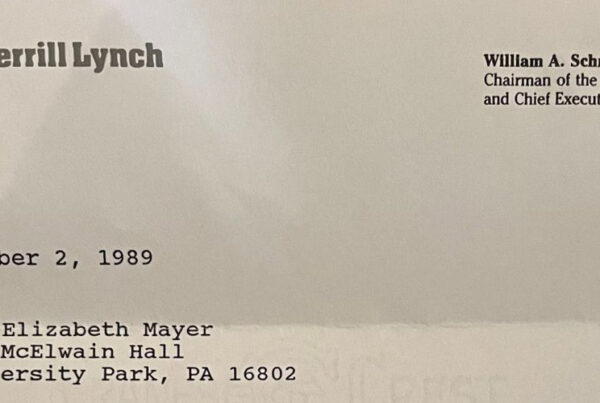
Article Summary: [Part 2 of 2] Susan arrives at the office early. She opens her email and finds 36 new email messages. She looks at her watch and realizes she has just five minutes before her first meeting. What emails will she read? Will it be yours? Like most people, Susan will decide with a glance, at your subject line and address, if she will even open the email you sent. Here are five suggestions to write better emails that generate the results you want.
Special Delivery: How to Write Emails Your Audience Will Open and Act Upon (Part 2)
Copyright © 2010. The Chief Storyteller®, LLC. and ThinkBusiness Magazine
Ira J. Koretsky
June 2010
[This is the second in a two-part series. Part 1 is Avoid Foot in Mouse Syndrome: Write Emails that Generate More Sales]
Susan arrives at the office early. She opens her email and finds 36 new email messages. She looks at her watch and realizes she has just five minutes before her first meeting. What emails will she read? Will it be yours?
Like most people, Susan will decide with a glance of your subject line and address if she will even open the email you sent. Here are five suggestions for avoiding deletion and generating the results you desire.
Use a Compelling Subject Line
At The Chief Storyteller ®, we refer to any subject line, slide title, key message, headline, etc. as your Better Tomorrow Message™ (BTM™). For emails, your BTM™ is the subject line. It is likely the first thing readers look at. As such, write the most important part of your message in 50 characters or less or fewer than 10 words. Be deliberate in how you choose your words. Grab the reader’s attention by making your subject line different and relevant. Clearly state the benefit he/she can expect from reading your email. Ensure that your subject line passes the three-second scan. As a suggestion, look at the email subject lines you receive over the next few days. What words stand out? What insights can you apply to your own email marketing?
Write the most important part of your message in 50 characters or less.
Synchronize Your Message
People too often take email for granted. Rather, consider email one of your most important assets. It is likely one of the main forms of communicating with your clients and prospects. Therefore, synchronize everything you write with your organization’s core message—your answer to “What do you do? (“elevator pitch”). Use the same or similar words and phrases as your core message. Look at everything in your sales and marketing tool kit (e.g., white papers, presentations, press releases, product sheets, etc.) for message points you can repurpose in your emails.
Focus on One Topic
With today’s frenetic, go-go-go, multi-tasking culture, we are constantly looking for ways to do more things faster. As a result, many people put too much information in one email. Generally, people do a quick eye scan of an email searching for key topics, namely headlines. The more key topics and headlines you have, the more challenging it will be to comprehend your email. Focus on one main topic to make it easier for your readers to retain and act on the information you provide. Include three or fewer support points. Overall, keep your emails short and on point. Leave the details to a follow-up telephone call or document attachment.
Write for Readability
Engage your audience with a conversational tone. Write as if you were meeting face-to-face over coffee. For help in making your email content understandable and conversational, try drafting your messages in Microsoft® Word. In addition to the spelling and grammar checks, it comes bundled with two easy-to-use tools: The Flesch Reading Ease and The Flesch-Kincaid Grade Level.
The Flesch Reading Ease measures “readability” of your content. In general, you should aim for a score of at least 50. The Flesch–Kincaid Grade Level measures “understanding” of your content. As articles in most mainstream periodicals are written below the tenth grade level, you should too. Contact me and I would be happy to share our tip guide explaining how to set up and use these two tools.
Here are three blog resources to help with writing more effective emails with an eye toward readability.
- Write to the 10th Grade Level to [Dramatically] Improve Audience Engagement (read)
- Always Simplify Your Communication, Even if it is Rocket Science – The Saga with Pluto’s Name (read)
- Talk at the 10th Grade – Simplify Your Communication (read)
Deliver Value
Make your emails memorable. One great way is through what I call Moments of Impact (MOIs). MOIs are where you offer something of value. Examples include:
- Recommendations for articles to read, events to attend, vacation spots to visit, websites to review, books to read, people to meet, and restaurants to eat at
- Referrals to prospective clients, partners, sponsors, etc.
- Suggestions for helping with specific challenges and issues your client and prospects are experiencing.
The more trust and good will you build, the more likely you will have a customer for life.
To improve your odds of avoiding deletion and generating the results you want, follow these tips and be sure to heed the words of Mark Twain, “The most useful and interesting letters we get here from home are from children seven or eight years old… They write simply and naturally and without strain for effect. They tell all they know, and stop.”
Contact us to learn more about improving your success with email, website, and other outreach engagement communication. Ask about our communication, public speaking, and storytelling keynotes, workshops, coaching, and services.
Read More ThinkBusiness Articles
- When Nobody is Looking, Character Still Counts – Make Your Business Stories Credible (read)
- Shoulda, Woulda, Coulda – 5 Activities You Really Should Do (read)
- Business is Personal – 3 Tips to Accelerate Relationship Building with Small Talk (read)
- Make Networking Pay Off – How to Find the Right Events for You (read)
- The Art of Listening – 5 Ways Active Listening Improves Your Sales Success (read)
- Before You Make that Call – Use Research to Stand Out from Your Competition (read)
- Treat Everyone Like a Key Decision Maker – How Improvisational Humor Training Helps You Sell (read)
- Avoid Foot in Mouse Syndrome: Write Emails that Generate Results, Part 1 (read)
- Special Delivery: How to Write Emails Audiences Will Open, Part 2 (this article)
- Networking as a Sales Tool – 5 Sure-Fire Steps to Increase Sales Success (read)
- Thinking of Going Global? Use Social Media to Accelerate Your International Success (read)
- Better Blogging for Better Results – 8 Tips to Generate Opportunities from Blogging (read)
- The “What Do You Do?” Answer – A Key Tool in Your Sales Toolbox (read)
- Business is Personal – 3 Tips to Build Rapport in Sales Meetings (read)
- It’s Who Knows You – 3 Little Known Ways to Turn LinkedIn into a More Valuable Tool (read)
- Keep Your Top Customers Forever with Internal Champions, Part 1 (read)
- Keep Your Top Customers Forever with Internal Champions, Part 2 (read)
- Life Lessons – Everything I Learned About Sales, I Learned From My Parents (read)
Updated Content 2012, Updated header photograph 2019
Photography Source: DepositPhotos
#chiefstoryteller #email #communication #marketing



